Marbled raphael catfish - Amblydoras hancockii
Scientific name: Amblydoras hancockii
Common name: Marbled raphael catfish
Family: Doradidae
Usual size in fish tanks: 14 - 16 cm (5.51 - 6.3 inch)
014
Recommended pH range: 6.2 - 7.5
Recommended water hardness: 7 - 21°N (125 - 375ppm)
0°C 32°F30°C 86°F
Recommended temperature range: 22 - 28 °C (71.6 - 82.4°F)
The way how these fish reproduce: Spawning
Where the species comes from: South America
Temperament to its own species: peaceful
Temperament toward other fish species: peaceful
Usual place in the tank: Bottom levels
Food and Feeding
Marbled Raphael Catfish are opportunistic feeders that will accept a wide range of food, including pellets, algae wafers, and various types of frozen and live foods such as bloodworms. Juveniles tend to be more active during the day, while adults are mostly nocturnal and will feed more eagerly after lights out. To ensure they get enough food, it's best to provide a meal in the evening when the tank is dark. A balanced diet with occasional protein-rich treats like brine shrimp or insect larvae helps maintain their health and vibrant appearance.
Origin and Natural Habitat
The Marbled Raphael Catfish (Amblydoras hancockii), also known as the Blue Eye Catfish, is native to the slow-moving and muddy waterways of South America. They are commonly found in countries such as Brazil, Guyana, Peru, and Bolivia. These rivers and streams are often filled with submerged roots, rocks, and dense vegetation, providing the catfish with plenty of hiding places. In the aquarium, replicating this environment with soft substrates, driftwood, and hiding spaces is ideal for their comfort and natural behavior.
Sexing Marbled Raphael Catfish
Sexing this species can be somewhat challenging, but there are a few visual cues. When viewed from above, males tend to have a more slender body shape compared to the rounder, fuller females. Another distinction is in their bellies: females usually have a white belly, while males often display a freckled or speckled belly. These subtle differences become more apparent as the fish mature.
Breeding Habits
Breeding Amblydoras hancockii in captivity is still largely undocumented. In the wild, it is believed that these catfish are bubble-nest builders, with the males taking on the responsibility of parental care. Despite their peaceful nature, there have been no confirmed reports of successful breeding in aquariums. If breeding does occur, providing a calm, secluded tank environment with floating plants could encourage natural breeding behavior.
Lifespan
With proper care, Marbled Raphael Catfish can live for 8 to 12 years in captivity. Consistent water quality, a varied diet, and a stress-free environment can help them reach their full lifespan. Their hardy nature makes them resilient, but regular tank maintenance is still essential for long-term health.
Tank Setup and Description
Marbled Raphael Catfish are peaceful, nocturnal fish that appreciate a well-decorated tank with plenty of hiding places. Driftwood, rocks, and dense plants such as Java Fern, Amazon Swords, or Anubias are ideal for creating a comfortable environment. These fish prefer dim lighting and soft substrates, which mimic their natural habitat in the wild. Though they are peaceful, they may hide during the day and become more active during nighttime hours.
These fish are also plant-safe, meaning they will not uproot or harm live plants. Their peaceful temperament makes them a good choice for community tanks with similarly non-aggressive species. However, be sure to monitor tank mates to avoid any nipping or harassment that might cause stress.
Compatibility
Marbled Raphael Catfish can be kept with other peaceful species such as Tetras, Corydoras, Gouramis, and other bottom-dwelling fish. Avoid keeping them with overly aggressive fish or fin-nippers, as this can lead to stress or injuries. Providing plenty of hiding spots will also help reduce stress and keep the fish healthy.
Pictures
Bought by aqua-fish.net from jjphoto.dk.
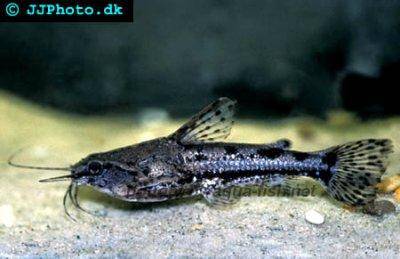


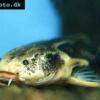 Spiny
Spiny 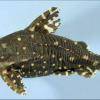 Thorny
Thorny 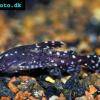 Raphael
Raphael 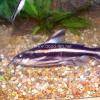 Striped
Striped